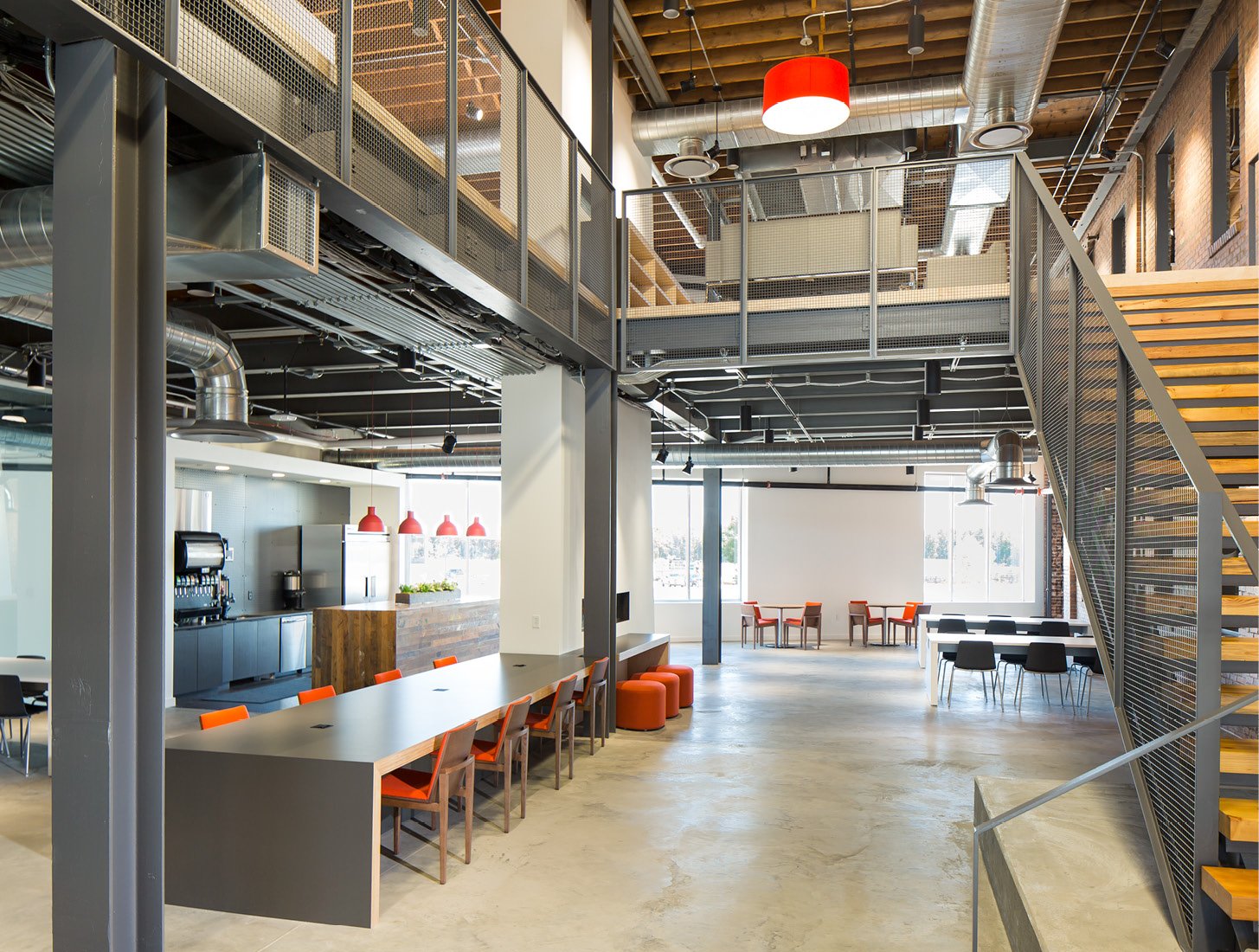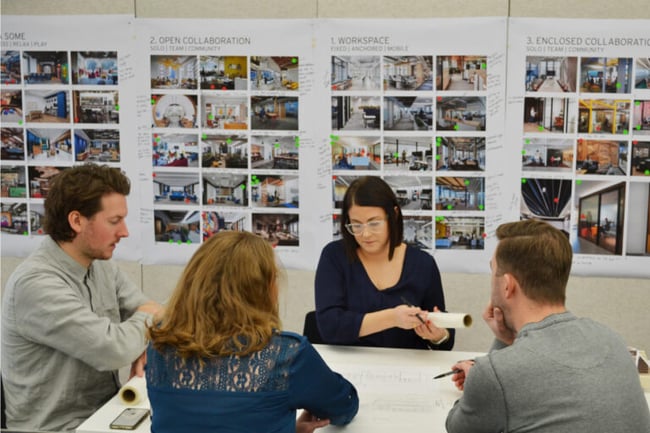Reducing Long-Term Personnel Costs Through Design

Attracting and retaining staff is the greatest long-term expense for many commercial building owners. Over 30 years, 92% of an owner’s total spending is devoted to employee salaries and benefits—overshadowing the initial cost of constructing a facility.
In our experience, the design process is an opportunity to lower these long-term costs. The decisions you make with your architect can help reduce absenteeism, improve workplace performance, and yield a return on investment.
In this article, you will learn four ways to reduce long-term personnel costs through design:
- Promote occupant well-being
- Use natural materials
- Consider talent attraction and retention
- Involve employees in the design process
After reading, you will better understand how to use the design process to proactively address employees’ needs.
Understanding Long-Term Personnel Costs
Many commercial organizations have a dual responsibility. In addition to constructing and maintaining facilities, they must attract and retain employees. Often, the ladder is the largest long-term expense.
According to a federal government study, construction costs make up only 2% of a building owner’s total spending over 30 years. Maintaining the facility makes up 6% of an owner’s spending, and personnel costs account for 92%.

Personnel costs account for 92% of an owner's total spending.
The design process is a chance to lower these long-term costs. While investments in durable materials and high-performance systems can lower maintenance costs, employee-friendly design strategies can create a more productive and engaged environment.
The goal is to find a balance between these cost categories. Your design team should help you make wise long-term investments while protecting your initial construction budget.
4 Design Strategies for Reducing Long-Term Personnel Costs
1. Promote Occupant Well-Being
According to the Integrated Benefits Institute, a non-profit research group, productivity losses due to sick days cost US employers approximately $530 billion in 2018. Along with short-term illnesses, chronic conditions like stress, fatigue, and depression lead employees to miss work.
The workplace plays a crucial role in maintaining employees’ health. After all, the workplace is where we spend most of our time.
Building rating systems like WELL and Living Building Challenge (LBC) offer comprehensive frameworks for improving occupant well-being. These systems promote natural daylighting and visual connections to the outdoors to boost occupants’ moods and regulate circadian rhythms.
They also set standards for air quality and non-toxic cleaning protocols to mitigate chronic illnesses.
2. Use Natural Materials
Recent research has demonstrated the adverse effects of synthetic building materials. While off-gassing from Volatile Organic Compounds (VOCs) can cause short-term irritation, chemicals like flame retardants and antimicrobials are linked to chronic conditions like asthma and cancer.
To protect employees, use natural materials wherever possible. Opting for materials like wood, concrete, and textiles made from hemp can protect vulnerable populations and create a healthier work environment.
Additionally, natural materials can connect occupants to nature. This practice, known as biophilic design, can help improve energy levels, uplift moods, and even boost cognitive performance. Learn more by reading about biophilic design strategies.
3. Consider Talent Attraction and Retention
Although several factors impact employee retention, your physical workplace plays a significant role. The design process is an opportunity to find solutions that foster a more productive, positive culture and improve retention rates.
Improved retention rates lead to a return on investment. On average, US companies spend $4000 on recruitment per employee, and job training can be as expensive.
The ideal work environment will look different for every company and industry. Some organizations may want to foster a more collaborative culture, and others may need more private space for focused work. Nevertheless, thoughtful design that gives employees access to daylight and ample space to complete tasks is always effective.
A workspace can also serve as a powerful marketing tool for new hires. A building project is an opportunity to showcase your mission, values, and culture. Creating a space where employees want to spend their time can help your organization attract top talent in a competitive labor market.
4. Involve Employees in the Design Process
Your team is one of your greatest resources during the design process. Their insights can help your architect better understand how they work, leading to more customized solutions.
We recommend including employees in pre-design activities. During visioning workshops, planning workshops, and benchmarking tours, employees can provide an on-the-ground perspective of your organization.

Pre-design activities can help engage your staff in the design process.
While smaller organizations may be able to include their entire team in these activities, larger organizations may want to select a cross-section from different teams or departments. For example, a manufacturing company may include both office and production staff in early design discussions. User-needs surveys can help your architect get a broader perspective from the entire team.
Simply put, you want a space that serves its occupants and cultivates a positive, productive culture. The best way to achieve this goal is to give occupants a voice in the design process.
Learn More About the Cost of Building Ownership
During the design process, remember long-term operational costs, including the cost of your employees. By promoting occupant well-being, using natural materials, and including your team in the design process, you can reduce absenteeism, improve productivity, and boost talent attraction and retention rates.
Personnel costs are just one long-term cost to consider. Your architect should also help you reduce costs associated with maintenance, replacements, and energy consumption.
Learn more by reading about seven investments that improve building performance.